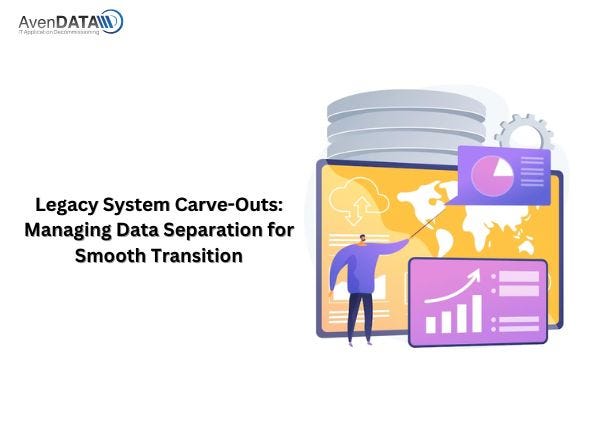Legacy System Carve-Outs: Managing Data Separation for Smooth Transition

Introduction: In today’s dynamic business landscape, companies often undergo restructuring, mergers, or divestitures that require the separation of legacy systems — a process commonly known as a carve-out. Legacy system carve-outs are intricate endeavors, especially when it comes to managing data separation. This blog explores the critical aspects of data separation in legacy system carve-outs and provides insights into ensuring a seamless transition.
Understanding Data Separation: Data separation involves the extraction and partitioning of data from existing legacy systems to facilitate the transition to new environments. It encompasses identifying, categorizing, and migrating data while maintaining integrity, security, and compliance.
Key Considerations for Effective Data Separation:
- Data Inventory: Conduct a comprehensive inventory of all data within the legacy system, categorizing it based on relevance, sensitivity, and ownership.
- Data Mapping: Create detailed data maps to visualize the flow of information and identify interdependencies between different datasets.
- Data Cleansing: Prioritize data quality by cleansing redundant, outdated, or trivial (ROT) data to streamline the migration process and reduce storage costs.
- Data Security: Implement robust security measures to protect sensitive data during extraction, transfer, and storage, ensuring compliance with data protection regulations.
- Data Retention Policies: Define clear data retention policies to determine what data needs to be migrated, archived, or purged based on legal and regulatory requirements.
- Data Migration Tools: Utilize specialized data migration tools and techniques to automate data extraction, transformation, and loading (ETL) processes, minimizing manual errors and accelerating migration timelines.
- Data Validation: Perform rigorous data validation and reconciliation to verify the accuracy and completeness of migrated data, mitigating the risk of data loss or corruption.
- Stakeholder Communication: Foster open communication and collaboration among stakeholders, including IT teams, business units, and external partners, to align expectations and address concerns throughout the data separation process.
- Contingency Planning: Develop contingency plans and fallback mechanisms to address unforeseen challenges or disruptions, ensuring business continuity during the transition period.
- Post-Migration Testing: Conduct thorough testing of migrated data and integrated systems to validate functionality, performance, and interoperability, enabling smooth post-carve-out operations.
Conclusion: Effective data separation is pivotal for the success of legacy system carve-outs, enabling organizations to streamline operations, optimize resources, and adapt to evolving business needs. By adopting a strategic approach and leveraging advanced technologies, companies can navigate the complexities of data separation with confidence, ensuring a smooth transition to new environments while safeguarding data integrity and compliance.
